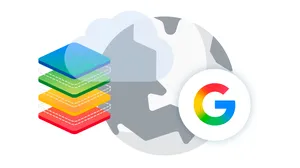Predicting future travel times with the Google Maps APIs
Location-based and time-relevant data are changing the way we live, work and travel. As consumers, we can access incredibly detailed information about where we are and where we’re going with a few taps on our mobile devices. Location and time-relevant data play an important role in helping to answer everyday questions like “what’s the best route to take when running errands?” or “what time is my taxi arriving?” At work, we rely on this data to make better decisions, like how to optimize utilization of assets or organize a team. Google Maps and Google Maps APIs have played a key role in helping us make these decisions, both at home and at work.
Today, we’re bringing predictive travel time – one of the most powerful features from our consumer Google Maps experience – to the Google Maps APIs so businesses and developers can make their location-based applications even more relevant for their users.
Predictive travel time uses historical time-of-day and day-of-week traffic data to estimate travel times at a future date. This makes it easier than ever to predict how long it will take to get somewhere and suggest the best route even when the departure time is far in the future.
Since traffic conditions in the future will vary greatly, we give companies the ability to set an optional traffic_model parameter to choose whether an optimistic, pessimistic or best_guess estimate of traffic conditions is most appropriate for their application. Some examples:
Today, we’re bringing predictive travel time – one of the most powerful features from our consumer Google Maps experience – to the Google Maps APIs so businesses and developers can make their location-based applications even more relevant for their users.
Predictive travel time uses historical time-of-day and day-of-week traffic data to estimate travel times at a future date. This makes it easier than ever to predict how long it will take to get somewhere and suggest the best route even when the departure time is far in the future.
Since traffic conditions in the future will vary greatly, we give companies the ability to set an optional traffic_model parameter to choose whether an optimistic, pessimistic or best_guess estimate of traffic conditions is most appropriate for their application. Some examples:
- If your application is used for scheduling deliveries, and you want to ensure you’ve allowed enough time between deliveries so your drivers won’t be late, you might want to use the pessimistic travel time estimates.
- On the other hand, if you’re building a thermostat app, and you want the house to be warm by the time your user arrives home from work, you might want to use the optimistic travel time estimate to calculate when the user is likely to arrive.
- If you want to give your user an estimate of the most likely travel time to their destination, the default best_guess traffic model will give you the most likely travel time considering both current traffic conditions and historical averages.

“Taking the guesswork out of knowing how long it will take to drive between homes will help us provide a better customer experience to our users” – Curtis Howell, Product Manager Customer Engagement, Redfin
Predictive travel time is available for both Standard Plan and Premium Plan customers in the Direction and Distance Matrix API, and for Premium Plan customers only in the JavaScript Maps API.To get started with the predictive travel time, visit our documentation on the Directions and Distance Matrix API and try it out by signing up online for the Standard Plan or reach out to your account manager. To become a Premium Plan Customer, please reach out here.
Please view the original post at http://cloud.googleblog.com/2015/11/predicting-future-travel-times-with-the-Google-Maps-APIs.html






